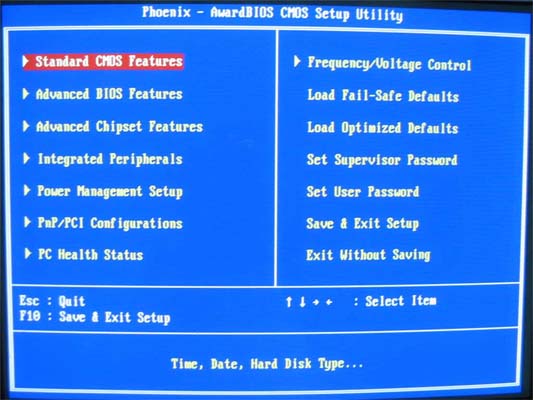History of Computers - Basic Input/Output System
Page created by: Mary Payne
Introduction
[1] BIOS
The basic input/output system, BIOS, appears when a computer is turned on and is the code that checks the hard drive, memory, keyboard and the monitor screen before the operating system loads. BIOS program is located in the ROM, read only memory, chip and the data is stored in the CMOS structure, complementary metal-oxide semiconductor.
Overview
 [2]
Example of what the BIOS is checking throughout the computer
[2]
Example of what the BIOS is checking throughout the computer
The BIOS is a in every computer, that begins a number of diagnostic tests at the start of a computers boot up process. BIOS checks to make sure that different parts and functions of the computer are working, such as, hard drive, the monitor, keyboard, memory, processor and many others. It configures the PC's hardware so that the operating system can recognize and install the appropriate software device drivers. [3] The BIOS is located in the ROM chip which is on the CMOS chip and all of this is located on the motherboard.
[4] Example of the BIOS on the motherboard
Significance
BIOS is significant in the history of computers because it allows each computer to work properly and checks for anything that has gone wrong in the computer. Also, the BIOS is significant today because every computer has a BIOS and it consistently throughout the years, checks the computer to make sure everything is doing their job.